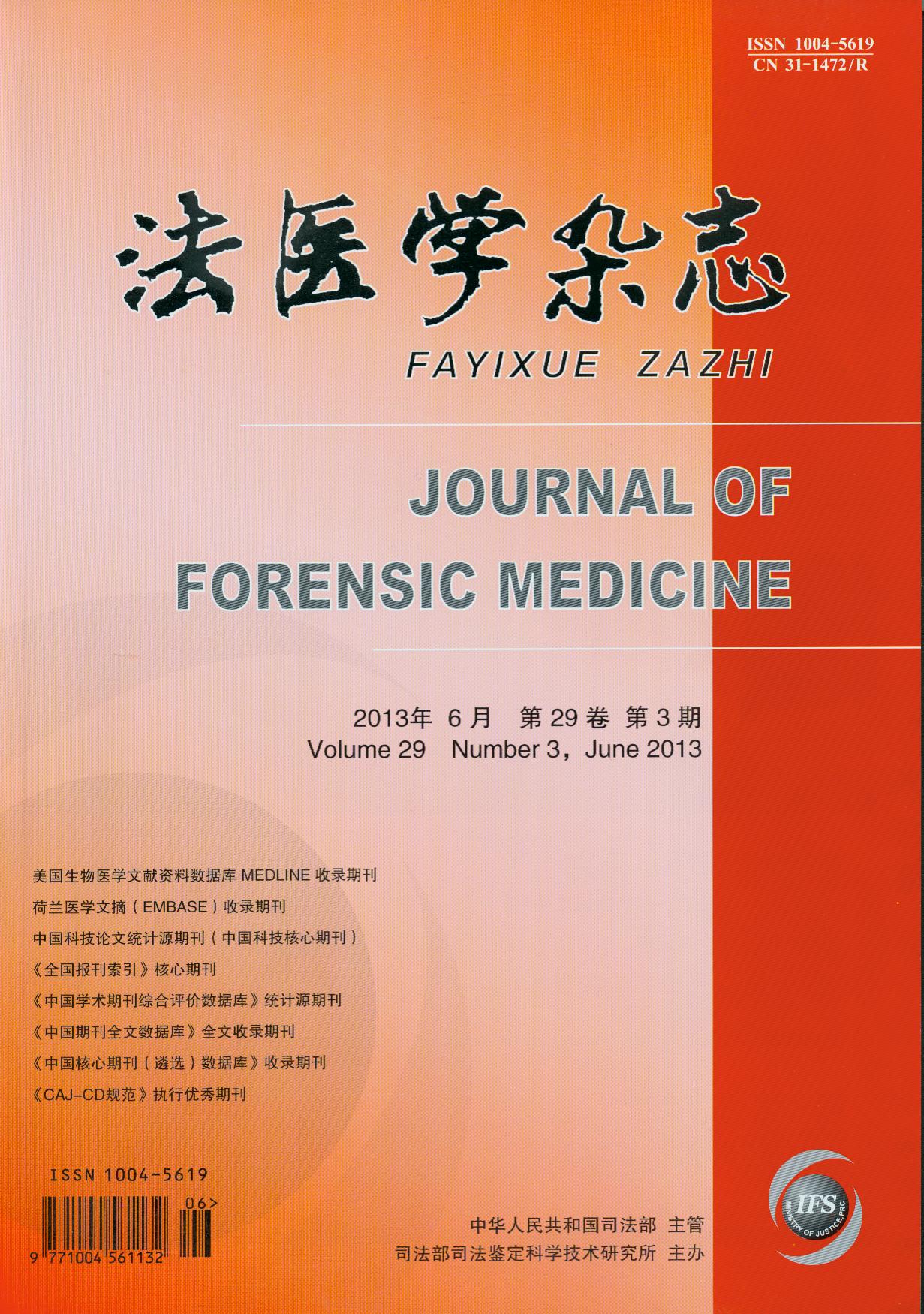|
|
Genetic Polymorphisms of 15 X-STR Loci in Shandong Han Population
MA TENG, XU JING, YANG YA-JUN, ET AL.
2013, 29(3):
202-205,208.
DOI: 10.3969/j.issn.1004-5619.2013.03.012
Objective To investigate the genetic polymorphisms of 15 X-STR loci in Shandong Han population in order to establish the forensic application database. Methods The multi-PCR primers of these loci were designed by Primer Premier 5.0 software and labeled by 4 fluoresceins (FAM, VIC, NED and TET). The developed multi-PCR was used to investigate 15 X-STR loci (DXS10011, DXS101, GATA165B12, DXS6795, DXS6800, DXS6801, DXS6803, DXS7132, DXS7133, DXS7423, DXS7424, DXS8377, DXS8378, DXS9898 and HPRTB) selected from the X chromosome of 481 unrelated individuals (295 females and 186 males) in Shandong Han population. Results Among the 15 X-STR loci, GATA165B12, DXS6800, DXS6803, DXS7133 and DXS7423 showed moderate polymorphisms, while the rest 10 X-STR loci showed high polymorphisms (PIC>0.5 and H>0.5). No shared haplotype was detected among the males in Shandong Han population. Conclusion The developed multi-PCR system with fluorescence detection provides an effective way to establish X-STR loci database of population genetics in Shandong Han population and shows its forensic application.
Related Articles |
Metrics
|


